- Home
- Oliver Sacks
Seeing Voices Page 18
Seeing Voices Read online
Page 18
A similar acuity may also occur, and persist, in the hearing children of deaf parents. Thus in the case described by Arlow:
The patient would look intently at his parents’ faces from early childhood on.… [He] became extremely sensitive to intentions and meanings which can be communicated through expressions on the face.… Like his [deaf] father, he was particularly sensitive to people’s faces and could make good judgements about the intentions and sincerity of those with whom he was engaged in business … [he] felt that in ordinary business negotiations he had a serious advantage over his opposite numbers.
57. It should not be supposed that all visual-cognitive processing in deaf signers is transferred to the left hemisphere. The disturbing (even devastating) effects of right hemisphere lesions on signing make it clear that this hemisphere is equally crucial for some of the visual-cognitive abilities underlying the capacity to sign. S. M. Kosslyn has recently suggested that the left hemisphere may be better at image generation, and the right hemisphere at image manipulation and transformation; if this is so, lesions in opposite hemispheres may differentially affect various components of the mental imagery, and mental representation of space, in Sign. Bellugi and Neville are planning further studies to see if such differential effects (both in simple perceptual tasks and in complex forms of imagery) may indeed be found in signers with damage to one or the other hemisphere.
58. Although Neville, thus far, has obtained only electrophysiological evidence for such reallocation (neuro-imaging, PET scan studies, are planned) striking anatomical evidence for this has recently been obtained. Thus if newborn ferrets are centrally deafened (by cutting fibers to the chief auditory nuclei), many normally auditory pathways and centers are modified, and become exclusively visual in morphology and function (Sur et al., 1988).
59. Lenneberg, commenting on the critical age period for language acquisition (which he sees as related to the establishment of hemisphere dominance), speaks of normal lateralization being established in the congenitally deaf provided they acquire language by the age of seven. Sometimes, however, cerebral lateralization is not well established: perhaps, writes Lenneberg, “a relatively large percentage of the congenitally [and linguistically incompetent] deaf falls into this category.”
Early language acquisition, whether speech or Sign, seems to kindle the linguistic powers of the left hemisphere; and deprivation of language, partial or absolute, seems to retard development and growth in the left hemisphere.
60. Cudworth writes, in the seventeenth century, of how a
skilful and expert limner will observe many elegancies and curiosities of art, and be highly pleased with several strokes and shadows in a picture, where a common eye can discern nothing at all; and a musical artist hearing a consort of exact musicians playing some excellent composure of many parts, will be exceedingly ravished with many harmonical airs and touches, that a vulgar ear will be utterly insensible of (R. Cudworth, “Treatise Containing Eternal and Immutable Morality,” cited in Chomsky, 1966).
The capacity to move from a “common eye” or “vulgar ear” into artistic skill and expertise goes with the move from right to left hemisphere predominance. There is good evidence (both from studying the effects of cerebral lesions, as A. R. Luria has done, as well as experimentally, with dichotic listening) that while musical perception is chiefly a right hemisphere function in predominantly “naive” listeners, it becomes a left hemisphere function in professional musicians and “expert” listeners (who grasp its “grammar” and rules, and for whom it has become an intricate formal structure). A special sort of “expert listening” is required for those who use Cantonese or Thai, the morphology of which relies on tonal discrimination in a way European languages do not. There is evidence that this (normally a right hemisphere function) becomes a left hemisphere function in fluent Thai speakers: it is much improved in right ear (and thus left hemisphere) listening with them, and is grossly impaired with left hemisphere strokes.
A similar shift occurs with those who become mathematical or arithmetical “experts,” who become able to see mathematical concepts, or numbers, as part of a vast, well-organized universe or scheme. This may be equally true of painters and interior designers, who see space, and visual relationships, as no “common eye” can do. And it is true of those who acquire skill at whist, or Morse code, or chess. All the higher reaches of scientific or artistic intelligence, as well as banal game-playing skills, require representational systems that are functionally similar to language and develop like it; all of them seem to move into becoming left hemisphere skills.
61. There is a considerable and somewhat controversial literature on the character of cognitive function in the deaf—whether there is, in fact, a “deaf mind.” There is some evidence that their strong visuality disposes deaf people to specifically “visual” (or logico-spatial) forms of memory and thinking; that, given complex problems with many stages, the deaf tend to arrange these, and their hypotheses, in logical space, whereas the hearing arrange them in a temporal (or “auditory”) order (see, for example, Belmont, Karchmer, and Bourg, 1983).
Clearly, in a cultural sense, we may speak of the deaf mind, as we may speak of the Jewish or Japanese mind, a mentality distinguished by particular cultural sensibilities, images, perspectives, beliefs. But there is no neurological sense in which we can usefully speak of a Jewish or Japanese mind—whereas there may be, in relation to the deaf mind. There is an unusual number of deaf engineers, deaf architects, and deaf mathematicians, who have, among other things, great facility in picturing and thinking in three-dimensional space, picturing spatial transforms, and conceiving complex topological and abstract spaces. Probably this is partly based on a neurological disposition, on the neuropsychological or cognitive structure of the deaf mind.
Hearing children of deaf parents, who acquire Sign as a first language, and show striking visual enhancements even though they are hearing, may be not only bilingual, but “bimental,” in the sense of having access to, or use of, two quite distinct modes of mental functioning. Certainly some of them will speak of “switching” not only language, but mode of thought, depending on whether they find themselves, or wish to be, in a visual (Sign) or speaking mode. And some, like Deborah H., will switch from one to the other in response to their own thinking needs. It would be of great interest to investigate this further, to find, for example, whether such “switching” corresponds to clear-cut neurophysiological transitions in the brain, from a predominantly auditory to a visual mode, and vice versa.
62. Poizner, Klima, and Bellugi, 1987, p. 206.
63. This dichotomy is reminiscent of Bruner’s division into “narrative” and “paradigmatic,” which he sees as the two natural, elemental modes of thought (see Bruner, 1986). One is tempted to see the narrative mode as a right hemisphere function, the paradigmatic as a left hemisphere one. In the retarded, certainly, the narrative mode of thought and language may be remarkably developed, with the paradigmatic remaining grossly defective. (See Sacks, 1985.)
64. This seemed to be the case with Genie’s language, which was poor in syntax but relatively rich in vocabulary:
Genie’s language resembles right-hemisphere language. The dichotic listening tests indicate that her language is right-hemisphere language. Thus, Genie’s case may indicate that after the “critical period,” the left hemisphere can no longer assume control in language acquisition, and the right hemisphere will function and predominate in the acquisition and representation of language (Curtiss, 1977, p. 216).
65. See Schlesinger, 1987.
66. There has recently been an educational experiment in Prince George’s County, Maryland, with the introduction of Sign into first grade and preschool education among normal, hearing children. The children acquire it readily and enjoy it, and as they do they show significant improvement of reading and other skills. It may be that this facilitation of reading, of the ability to recognize the forms of words and letters, goes with the enhancement of sp
atial-analytic ability that occurs with the learning of Sign.
Even when (hearing) adults learn Sign, they too may become conscious of changes in themselves—a disposition to more vivid visual description, enhancements of visual imagery and memory, and often a freer and more direct expressive use of the body. It would be interesting to find out if there occurs to some degree, in such adults, an enhancement of visual evoked potentials such as Neville finds in hearing native signers.
Interestingly, there is not a good correlation between ability to learn spoken languages and ability to learn Sign. Some polyglots are taken aback at finding how “hard” it is; and other people, who have never been able to learn another spoken language, may be startled to find how “easy” Sign is. These differences may reflect differing visual powers of individuals, and have little to do with intellectual powers, or linguistic powers, in general. In adult life, basic visual powers may be capable of only limited enhancement, whereas early training, seemingly, can enhance visual powers in us all.
67. Newport and Supalla’s research is discussed in Rymer, 1988.
68. Supalla, in press.
69. It should be made clear that no sign language can be considered as “primitive” compared to any other sign language (just as no extant spoken language is more “primitive” than any other). But it is sometimes felt in the United States that ASL is by far the best sign language in the world—the best organized, the richest, the most expressive, etc.—an attitude which has led to a certain amount of ASL “imperialism” (causing other native sign languages, in smaller countries, to defer to, and even be replaced by, ASL). But this is a hierarchic concept. In fact, all languages, whether signed or spoken, no matter how new, or how limited their geographic distribution, have the same potentials, the same range of possibility—none can be dismissed as “primitive” or “defective.” Thus British Sign Language is fully the equal of ASL; Irish Sign Language is fully the equal of both; and so too is Icelandic Sign Language (even though there are only seventy deaf people in Iceland).
70. The hundreds of sign languages that have arisen spontaneously all over the world are as distinct and strongly differentiated as the world’s range of spoken languages. There is no one universal sign language. And yet there may be universals in signed languages, which help to make it possible for their users to understand one another far more quickly than users of unrelated spoken languages could understand each other. Thus a monolingual Japanese would be lost in Arkansas, as a monolingual American would be lost in rural Japan. But a deaf American can make contact relatively swiftly with his signing brothers in Japan, Russia, or Peru—he would hardly be lost at all. Signers (especially native signers) are adept at picking up, or at least understanding, other signed languages, in a way which one would never find among speakers (except, perhaps, in the most gifted). Some understanding will usually be established within minutes, accomplished mostly be gesture and mime (in which signers are extraordinarily proficient). By the end of a day, a grammarless pidgin will be established. And within three weeks, perhaps, the signer will possess a very reasonable knowledge of the other sign language, enough to allow detailed discussion on quite complex issues. There was an impressive example of this in August 1988, when the National Theater of the Deaf visited Tokyo, and joined the Japan Theater of the Deaf in a joint production. “The deaf actors in the American and Japanese acting companies were soon chatting,” reported David E. Sanger in The New York Times (August 29, 1988), “and by late afternoon during one recent rehearsal it became clear they were already on each other’s wavelengths.”
71. Edelman, 1987.
72. This point is made by Francis Crick in a recent article on neural networks (Crick, 1989). Crick describes a computational model, NETtalk, which, given an English text it has never seen before, babbles at first, having only random connections, but soon learns to pronounce words with 90 percent accuracy; thus, Crick observes, “it has learned the rules of English pronunciation, which are notoriously not straightforward, in a tacit manner, from examples only, and not because the rules have been explicitly embodied in some program.” What might seem to be a “Chomskian” task, albeit a trivial one compared to the achievement of grammar, is here accomplished by a mere network of artificial neurons with initially random connections. There has been great excitement recently about such neural networks, but the actual mechanisms evolved by the brain, Crick feels, are quite unknown to us at this point, and liable to be of an altogether different (and more “biological”) order and nature.
Addendum 1990: Such a network has very recently been devised (by B. P. Yuhas) to read lips, by estimating vowels based on mouth shape, and positions of lips, teeth, and tongue. This neural network, combined with conventional speech recognition systems, may one day produce a system which is fast enough and flexible enough for practical use (Science 247:1414, March 23, 1990).
73. It will be evident that I have moved around somewhat between a “nativist” (a Chomskian) and an “evolutionist” (an Edelmanian) viewpoint. I must confess to being emotionally attracted to a Chomskian, or Cartesian, or Platonic idealism, to the notion of our language capacities, our powers of intellectual apprehension, all our perceptual powers, being innate—and, in the most general terms, to the notion of Design; but my observations of language acquisition, and of all developments in the individual or the species, tell me a much untidier story, tell me that nothing in nature (or animate nature) is “designed” in advance, and that everything evolves, or emerges, under the pressures of contingency and selection. Thus my general movement, as I have been writing, is from a nativist towards an evolutionist standpoint. Yet the study of Sign, and its acquisition in childhood, fascinatingly, seems to give strong support to both points of view, and perhaps the two are not incompatible.
74. The experiment of King Psammetichos, a seventh-century B.C. Egyptian ruler, was described by Herodotus. Other monarchs, including Charles IV of France, James IV of Scotland, and the notorious Akbar Khan, have repeated the experiment. Ironically, in the case of Akbar Khan, the infants were given over, not to shepherds who were forbidden to speak, but to deaf nurses who did not speak (but who, unknown to Akbar, signed). When, at the age of twelve, these children were brought to Akbar’s court, none of them (it is true) spoke, but all of them signed. There was, it was clear, no inborn or “Adamic” language, and if no language was used, no language was acquired; but if any language was used, even a signed language, this would become the language of the children.
75. Schein, 1984, p. 131. Shanny Mow, in a brief autobiography excerpted by Leo Jacobs, describes this all-too-typical estrangement of a deaf child in his own home:
You are left out of the dinner table conversation. It is called mental isolation. While everyone else is talking and laughing, you are as far away as a lone Arab on a desert that stretches along every horizon.… You thirst for connection. You suffocate inside but you cannot tell anyone of this horrible feeling. You do not know how to. You get the impression nobody understands or cares.… You are not granted even the illusion of participation.…
You are expected to spend fifteen years in the straitjacket of speech training and lipreading … your parents never bother to put in an hour a day to learn sign language or some part of it. One hour of twenty-four that can change a life time for you (Jacobs, 1974, pp. 173–174).
The only deaf children not liable to suffer such cruel estrangements even in their own households are those who are born of deaf (and signing) parents—such children are (in the words of a deaf friend with hearing parents) “another species.” Deaf children of deaf parents can enjoy, from the start, a full communication and relation with their parents; they acquire fluent language as easily and automatically as hearing children do, and at the same crucial time (in the third year of life): their Sign has a precision and a richness no non-native signer can acquire. They are more likely, very early, to meet other deaf adults and deaf children, to enter fully into an understanding community. They grow up with a
firm sense of confidence, and of personal and cultural identity—their lives have been organized, from the start, around “a different center” (Padden and Humphries, 1988). Many of the “elite” in the Deaf world are born of deaf parents, and sometimes, indeed, come from large, multi-generational deaf families—this was the case with all four student leaders of the Gallaudet revolt.
A different, and unique, position is occupied by the hearing children of deaf parents, who grow up with both Sign and speech as native languages, and may be equally at ease in both deaf and hearing worlds. They often become interpreters, and they are ideally suited for this, because they can interpret not only the language, but the culture, of one world to another.
76. Hearing parents of deaf children face especially delicate and anguished issues of belonging and identity. Thus one such mother, writing to me of her own child who had been deafened at the age of five months by meningitis, wrote: “Does this mean that overnight he has suddenly become a stranger to us, that somehow he no longer belongs to us but to the deaf world? That he is now part of the deaf community, that we have no claim on him?” This fear that their deaf child will become estranged from them, will be taken away from them by the deaf community, is one which a good many parents of deaf children express; and it is a fear which may move them to bind the child to themselves, and to deny him access, while he is young, to Sign and other deaf people. “While his care and nurture is in our hands,” continues my correspondent, “I feel he needs access to our language, in the same way as he has access to our food, our foibles, our family history.”

 Uncle Tungsten
Uncle Tungsten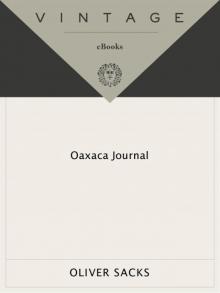 Oaxaca Journal
Oaxaca Journal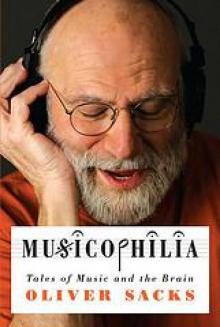 Musicophilia
Musicophilia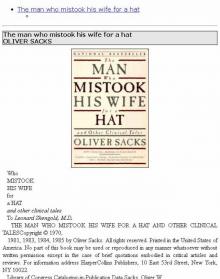 The man who mistook his wife for a hat
The man who mistook his wife for a hat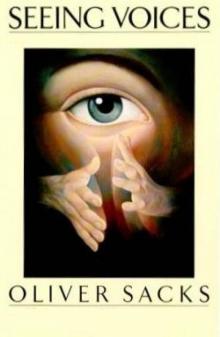 1989 - Seeing Voices
1989 - Seeing Voices On the Move: A Life
On the Move: A Life 1996 - The Island of the Colorblind
1996 - The Island of the Colorblind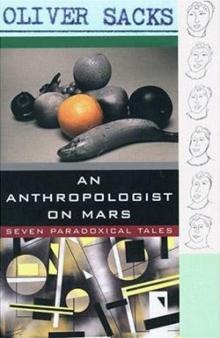 An Anthropologist on Mars: Seven Paradoxical Tales
An Anthropologist on Mars: Seven Paradoxical Tales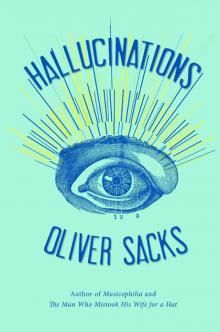 Hallucinations
Hallucinations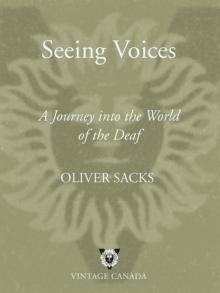 Seeing Voices
Seeing Voices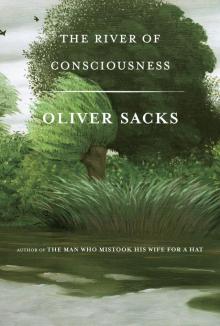 The River of Consciousness
The River of Consciousness Vintage Sacks
Vintage Sacks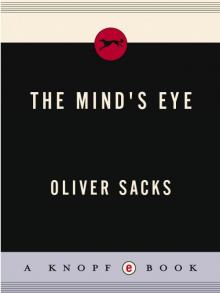 The Mind's Eye
The Mind's Eye Everything in Its Place
Everything in Its Place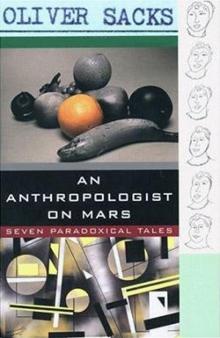 An Anthropologist on Mars (1995)
An Anthropologist on Mars (1995) Uncle Tungsten: Memories of a Chemical Boyhood (2001)
Uncle Tungsten: Memories of a Chemical Boyhood (2001)